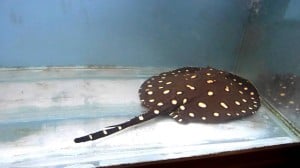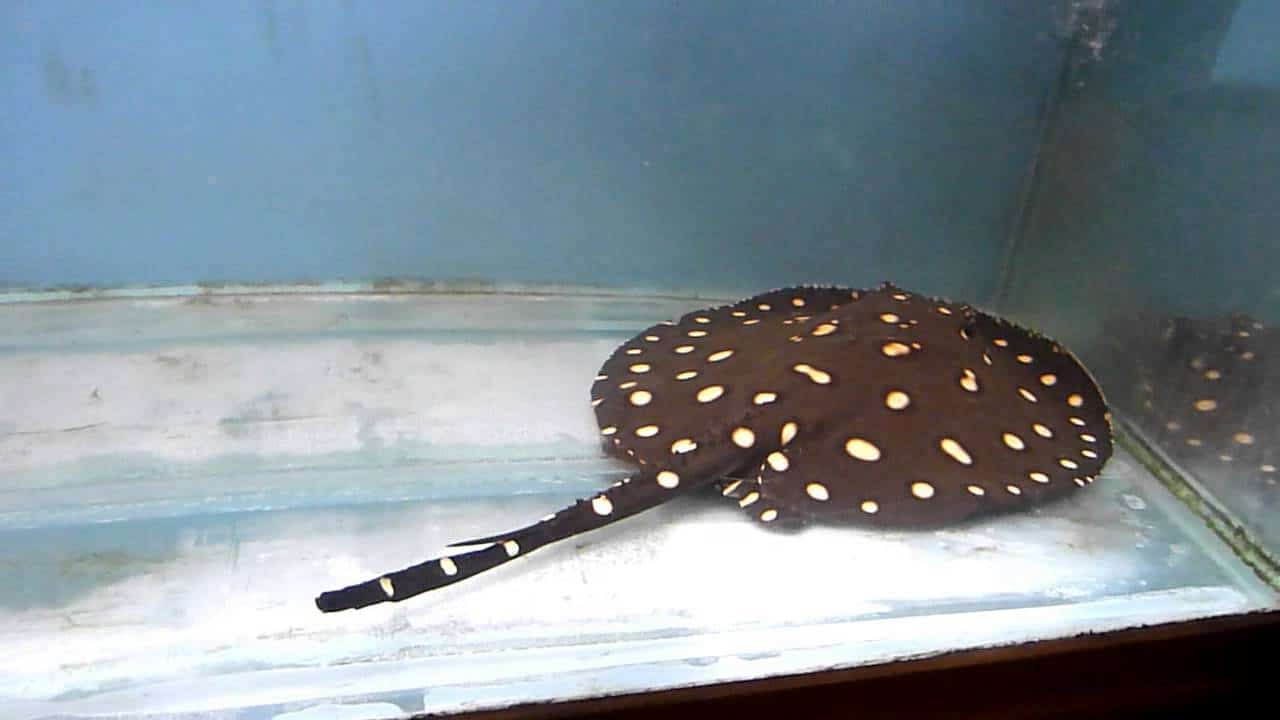
Common name: Henlei Stingray, Black Stingray, P12
Scientific name: Potamotrygon Henlei
Average Adult Fish Size: 60cm / 24 Inches
Place of Origin: Rio Tocantins basin, Brazil
Typical Tank setup: Bit of gravel and open swimming space, maybe the occasional bit of bogwood provided tank/pond is large enough
Recommended Minimum Aquarium Capacity: 500 gallons / 2000 Litres
Compatibility: Possibly try Discus although this may not work but it depends on the temperament of the individual stingray you are keeping. Provided the tank is large enough you could also keep these with Arowana.
Temperature: 23-28 Deg C / 73-82 Deg F
Water chemistry: pH 6.0 – 7.5 (lower than 7 preferred)
Feeding: Juveniles (often sold simply as “teacup” rays regardless of species) relish live or frozen bloodworm, Tubifex, Artemia, krill and suchlike. Adults should be fed correspondingly larger foods, such as whole mussels, cockles, prawns, squid, whitebait (or other fresh fish) and earthworms. A varied diet is needed to keep the fish in top condition.
Sexing: Rays are easy to sex. Males have a pair sexual appendages known as “claspers”, one on each pelvic fin. These are used to inseminate the female when mating and are clearly visible, appearing as finger-like extensions extending backwards from the inside of the fin. In juvenile males they’re much smaller, but can still be seen if you look closely.
Breeding: The spawning act itself is quite brief, lasting only a few seconds. Fertilisation occurs internally, the male inserting one of his claspers into the cloaca of the female before releasing his milt. Following a successful mating event the male should stop harassing his partner. Pups are born around 9-12 weeks later.
Additional Information: Potamotrygon Henlei is one of the more sought after ray species in the hobby due to its striking colours and impressive adult size. A fully grown one of these makes a stunning sight. Sadly exports from Brazil are now illegal under the IBAMA regulations, although captive bred fish are available occasionally. The price tends to be very expensive as a result.


Related Posts
Croaking Gourami – Trichopsis vittatus
Paradise Fish – Macropodus opercularis
Schubert’s Barb – Barbus Semifasciolatus